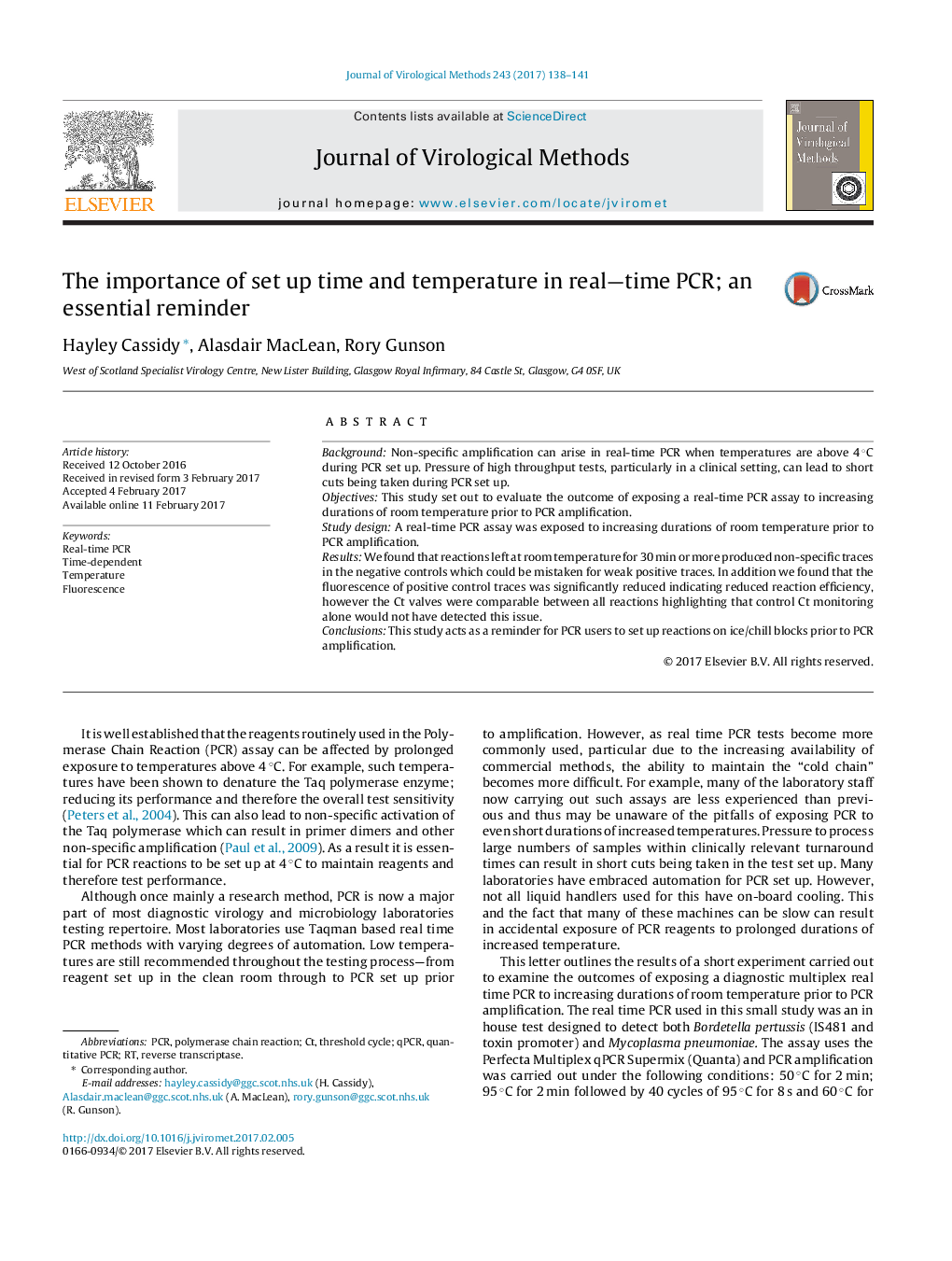| کد مقاله | کد نشریه | سال انتشار | مقاله انگلیسی | نسخه تمام متن |
|---|---|---|---|---|
| 5673092 | 1593434 | 2017 | 4 صفحه PDF | دانلود رایگان |

- PCR can produce non-specific traces if left at room temperature for over 30Â min.
- This can lead to negative clinical samples being reported as weak false positives.
- No effect on control Ct value however significant reduction of control fluorescence.
- We suggest monitoring control fluorescence as well as Ct to detect any issues.
BackgroundNon-specific amplification can arise in real-time PCR when temperatures are above 4 °C during PCR set up. Pressure of high throughput tests, particularly in a clinical setting, can lead to short cuts being taken during PCR set up.ObjectivesThis study set out to evaluate the outcome of exposing a real-time PCR assay to increasing durations of room temperature prior to PCR amplification.Study designA real-time PCR assay was exposed to increasing durations of room temperature prior to PCR amplification.ResultsWe found that reactions left at room temperature for 30 min or more produced non-specific traces in the negative controls which could be mistaken for weak positive traces. In addition we found that the fluorescence of positive control traces was significantly reduced indicating reduced reaction efficiency, however the Ct valves were comparable between all reactions highlighting that control Ct monitoring alone would not have detected this issue.ConclusionsThis study acts as a reminder for PCR users to set up reactions on ice/chill blocks prior to PCR amplification.
Journal: Journal of Virological Methods - Volume 243, May 2017, Pages 138-141